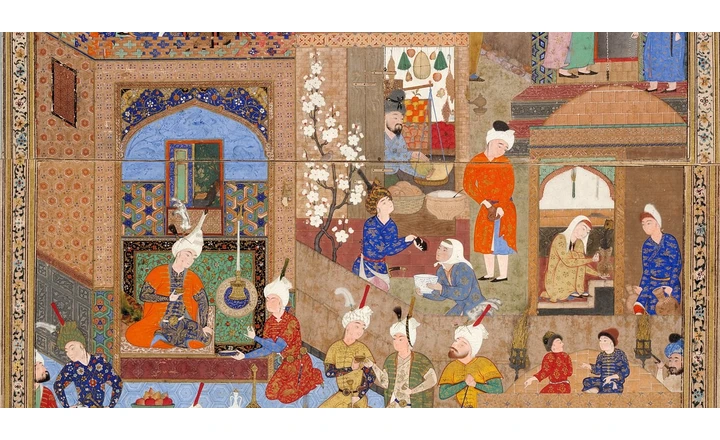Throughout history, mystics from various spiritual traditions have explored a common inner terrain—seeking union with the Divine, transcending the ego, and expressing ineffable truths through poetry, metaphor, and paradox. Among these, Sufism, the mystical dimension of Islam, stands out for its rich poetic legacy and profound spiritual insights. But remarkably, the themes found in Sufi poetry resonate far beyond the Islamic world.
This post explores how central Sufi themes—divine love, annihilation of the self, the path of the seeker, and symbolic language—echo across other mystical traditions, including Christian mysticism, Hindu Bhakti, Zen Buddhism, and Jewish Kabbalah.
1. Divine Love: The Heart’s Longing for Unity
In Sufi poetry, especially in the works of Rumi, Hafez, and Attar, love is not merely emotion—it is the engine of creation. The seeker is portrayed as the lover, and God as the Beloved. This yearning, often described in sensual or romantic imagery, expresses the soul’s desire to return to its source.
“The minute I heard my first love story,
I started looking for you, not knowing
how blind that was.
Lovers don't finally meet somewhere.
They're in each other all along.”
—Rumi
This deep, divine longing also appears in:
-
Christian Mysticism, where St. John of the Cross describes “the dark night of the soul” as a journey of love toward union with God.
-
Bhakti Poetry in Hinduism (e.g., Mirabai, Kabir), where the soul calls to Krishna or Rama with passion and devotion.
-
Jewish Kabbalah, which speaks of Shekhinah (the divine presence) longing to reunite with the Infinite.
2. Annihilation of the Self (Fana) and the Illusion of Ego
Sufism speaks of fana, the dissolution of the self in the presence of the Divine. It’s not destruction, but a surrender of the ego, which allows the seeker to be “nothing” so God can be “everything.” After fana comes baqa—remaining in God.
This spiritual death and rebirth mirrors:
-
Zen Buddhism, where ego and desire are seen as illusions, and enlightenment comes through letting go.
-
Christian Mystics like Meister Eckhart, who taught that “to be full of God, one must be empty of self.”
-
Advaita Vedanta in Hinduism, which teaches that the true self (Atman) is identical with the universal Brahman—once the false ego is transcended.
3. The Seeker’s Path: Stages of Spiritual Transformation
Sufi traditions map a detailed inner journey of spiritual development, often described as stations (maqamat) and states (ahwal), through which the seeker progresses: from repentance, to love, to knowledge, to annihilation.
This echoes the Eightfold Path in Buddhism, the Christian stages of purgation, illumination, and union, and the Yogic path of discipline and self-realization.
Attar’s Conference of the Birds is a symbolic rendering of this journey, where birds (souls) must pass through seven valleys—including the Valley of Love and the Valley of Annihilation—to reach the truth.
4. Symbol and Paradox: The Language of Mystics
Mystics often use symbolism, paradox, and poetry to express what cannot be grasped by reason alone. In Sufism, the wine cup, the tavern, the beloved, and the reed flute all carry spiritual meanings. The intoxication they speak of is divine ecstasy, not mere worldly pleasure.
Similarly:
-
Christian mystics speak of God as both immanent and transcendent, of the soul “seeing” in darkness.
-
Zen koans use absurd riddles to break the grip of rational thought.
-
Kabbalistic writings are layered with numeric codes and mystical symbols pointing to hidden realities.
In each case, language is used not to explain, but to evoke an inner experience—to gesture toward the unspeakable.
5. Unity Behind Diversity
Despite differences in theology and culture, mystics across traditions converge on a single truth: that beneath all forms and separations lies an essential unity. Whether it is Tawhid in Islam, Advaita in Hinduism, or the mystical Body of Christ, the message is the same: the world is many, but the truth is one.
Sufis express this beautifully:
“I searched for God and found only myself.
I searched for myself and found only God.”
—Rumi
Conclusion: A Shared Human Hunger for the Infinite
The mystical traditions of the world are like different rivers flowing into the same sea. Sufism, with its passionate love, haunting poetry, and radical surrender, speaks to this universal thirst. When read alongside other mystical voices, we discover not contradiction, but a global chorus of souls seeking the Divine.
These teachings remind us that beyond dogma, beyond ritual, there is an inner path of love, silence, and wonder—one that invites us not just to believe, but to experience.
Which mystical tradition speaks to your soul? How have poetry and silence helped you on your spiritual journey? Let’s reflect together in the comments.





